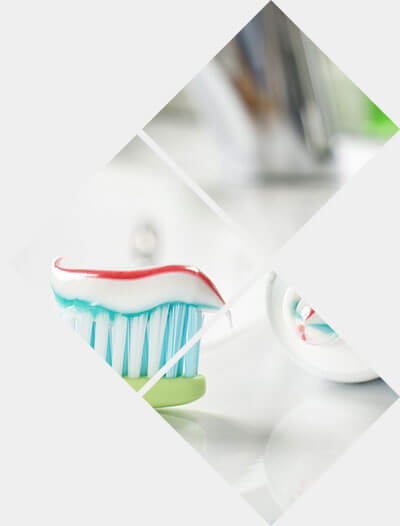
At MDCS, our attentive team gives each patient detailed pre- and post-procedure instructions to ensure treatment is safe, effective and comfortable. Whether you received a filling or underwent a more extensive procedure, it’s important to care for yourself and your teeth. Remember, we’re always here to answer any questions or concerns you have, so please give us a call if you need assistance.


Post-Op Instructions for
Tooth-Colored Fillings
- If we numbed you with a local anesthetic, you probably won’t regain feeling for several hours. While you’re numb, avoid chewing and drinking anything hot, so you don’t accidentally burn yourself or bite your cheek, lips or tongue.
- It’s normal for your tooth to feel sensitive, especially to biting pressure or hot and cold food and drinks. Your jaw and the areas where you received injections might also be sore. Discomfort can last from a day to a few weeks depending on your tooth’s condition but will usually respond to a mild over-the-counter pain reliever (i.e., aspirin, Tylenol or ibuprofen).
- Sometimes, it takes a day or two to get used to your new filling. However, if your bite doesn’t feel even or temperature sensitivity continues to get worse, call us as it could be a sign that a minor adjustment is needed.
- Composite fillings are fully set before you even leave our office. Once the anesthetic wears off, you can chew and eat as you normally would.
- Continue to brush at least twice a day and floss once a day.
- To ensure your filling lasts for many years, stick with your recommended schedule for dental exams and professional cleanings.

Post-Op Instructions for
Crown and Bridge Preparation
Crowns and bridges typically require two appointments. At the first appointment, we prepare the teeth by removing some of the enamel and placing a temporary restoration while a dental lab creates your custom, lifelike, permanent crown or bridge. A temporary crown isn’t meant to last long-term. If it falls out, be sure to call us right away to re-cement it because if the teeth around it shift, this could cause the fit of your permanent crown to be off. After your procedure:
- Your mouth will be numb. Avoid chewing or drinking hot beverages until the local anesthetic wears off completely so you don’t accidentally bite your lips, cheeks or tongue or burn your mouth.
- Don’t eat sticky foods, including gum, or anything very hard or chewy to avoid damaging your temporaries. When possible, chew on the opposite of your mouth.
- Brush twice a day as you normally would but brush gently around the temporary crown. When flossing, be extremely careful not to pull up on the dental floss as this can cause the temporary crown to come loose. Instead, pull it straight out of the side of your tooth.
- You may experience mild to moderate discomfort in your tooth and jaws and be sensitive to temperature and biting pressure. This usually diminishes after several days, though it can last a bit longer depending on the condition of your tooth. A mild over-the-counter pain reliever (i.e., aspirin, Tylenol or ibuprofen) will be helpful for relieving discomfort.
- It may take a day or two for your temporary crown to settle in and for you to adjust to it. If your bite feels uneven, call us and we can make a minor adjustment.
- Keep your scheduled appointment for placing your permanent crown.


Post-Op Instructions for
Crown and Bridge Cementation
At the second appointment for crowns and bridges, we remove your temporary crown and cement the custom, permanent restoration that was created for you at the dental laboratory. After your procedure:
- Avoid chewing or drinking hot beverages until the local anesthetic has completely worn off. It’s easy to accidentally bite your lips, tongue or cheeks when your mouth is numb. Don’t chew on hard objects or ice since it can damage your restoration.
- Brush and floss as you normally would. For a bridge, we sometimes recommend special cleaning aids to keep the area around and under the bridge clean and bacteria-free. If your teeth are sensitive to hot, cold or biting pressure, you can use a desensitizing toothpaste. If sensitivity doesn’t improve after a few days, give us a call.
- You may experience mild to moderate discomfort in your gums, tooth and jaw that lasts for a few days or longer. Sensitivity to biting pressure and temperature are especially common. Discomfort usually responds well to a mild over-the-counter pain reliever (i.e., aspirin, Tylenol or ibuprofen). You can also make a saltwater rinse by mixing one teaspoon of salt in a glass of warm water and swishing it in your mouth three times a day.
- Sometimes, it takes a day or two for the crown to settle in and it may feel strange at first while you adjust. If your bite feels uneven, you could require a minor adjustment, so call our office.

Post-Op Instructions for
Extractions
- There will be bleeding for a few days following an extraction. It might seem like a lot of bleeding but this is only because a little blood is mixed with a lot of saliva.
- Avoid chewing or drinking hot beverages until your anesthetic wears off completely. It’s very easy to accidentally burn yourself or bite your lips, cheek or tongue when your mouth is numb. On the day of the procedure, stick with soft foods and drink plenty of fluids. Once you feel comfortable, you can start eating normal food again.
- Bite firmly on a gauze pad for 30 to 45 minutes following your appointment to allow a blood clot to form. This stops bleeding and helps you heal. If you’re still bleeding when you remove it, use another clean gauze pad and bite on it firmly for 15 minutes. Repeat as necessary.
- It’s important not to dislodge the blood clot so don’t brush next to the extraction site, suck on a straw, rinse vigorously, smoke or drink alcohol for 72 hours.
- Don’t engage in vigorous exercise for 24 hours.
- It’s normal to experience minor pain and swelling for several days. Place an ice pack on your face near the extraction site to reduce swelling. Take pain medication and antibiotics, if prescribed, as directed.
- After 24 hours, you can start brushing and flossing the rest of your teeth again.
- Call us if heavy bleeding persists for more than an hour or two or if pain continues after a few days.


Post-Op Instructions for
Root Canals
- Avoid chewing or drinking hot beverages until your numbness wears off as you can easily bite your lips, cheeks or tongue or burn your mouth.
- If you’re wearing a temporary crown or we placed a temporary filling, call us right away if the filling falls out or the crown falls off. Keep in mind, it is normal for tiny pieces of temporary fillings to wear away and you could have an unpleasant taste in your mouth.
- You might experience discomfort for a few days after root canal therapy, particularly when chewing. Take pain medication as directed. You can minimize swelling by rinsing with warm salt water several times per day.
- If we prescribed you antibiotics, take them as directed even once the discomfort subsides.
- Don’t eat hard or sticky foods and try to chew on the opposite side of your mouth until your permanent restoration is placed.
Get a brighter, healthier smile with our worry-free, personalized care.

